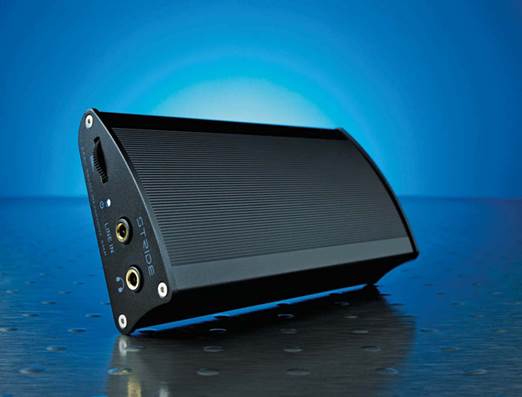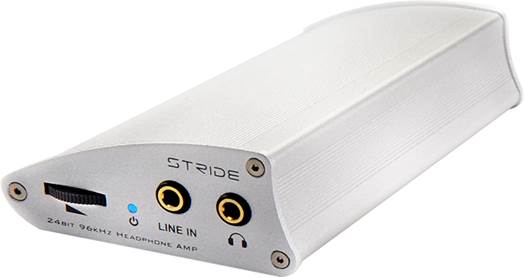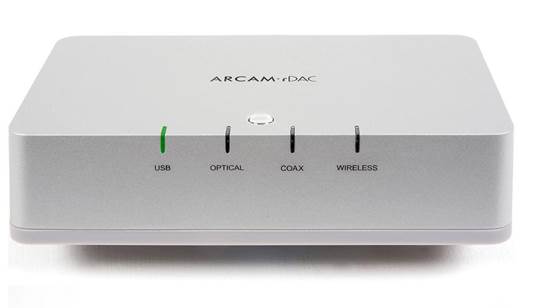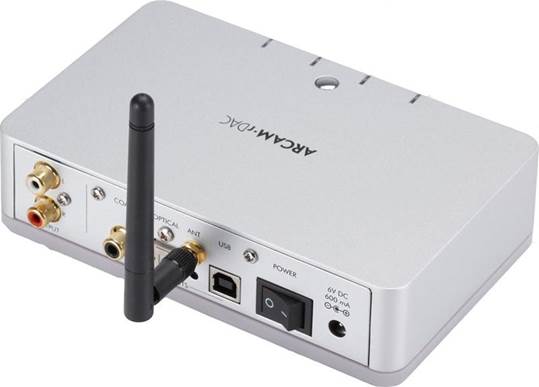Furutech ADL Stride: $578
The Furutech ADL Stride has been tested
before, gaining a four-star rating for its efforts. But in a Super test among
its class rivals, its price, portability and sound quality take a beating. But
first, let’s remind ourselves what this DAC and headphone amplifier can do.
Part of Furutech’s entry-level line of
products, the Stride supports native playback of up to 24-bit/96kHz music
files, which is plenty of scope to boost the music playing from your iTunes
collection. Any higher-resolution 192 kHz files will have to be down sampled to
96 kHz.

Such
a lofty price tag demands sonic excellence, and that’s what’s missing here
There are a number of ways you can use the
Stride. First, plug your favorite pair of cans into the 3.5mm headphone output,
and run a cable from your laptop’s USB port to the Stride’s mini USB input.
Alternatively, you can use the headphone output to take the signal into a
stereo amplifier and out to your speakers. Thirdly, feed the signal from your
smartphone’s headphone output into the Stride’s 3.5mm line level input. Of
course, that last application is a slightly clunky way of marrying a smartphone
with this DAC – we reckon it’s more likely to be used in a laptop system.
Adding to that set-up is the Stride’s
rechargeable battery, which means it can deliver a claimed 80 hours of playback
when charged (via mains or USB).There’s a slim volume wheel tucked into the
corner as well.
The Stride has a wedge-shaped aluminum
casing: it’s an odd shape and not as classy-feeling as its rivals. We find that
the rPAC (its closest rival here in concept) has a nicer feel to it and is a
neater, more compact option. $578 is quite a lot of money to spend on a DAC,
especially for use on the move, and the comprehensively equipped Lindy is the
only other one here over $578.
There’s a sense of solidity to the
plucking of strings from the Stride, but we’d like tauter and more agile
rhythms with precise edges
Bringer of balance
So how does the ADL Stride sound? Play In
the Cold, Cold Night by The White Stripes (Streamed, 320kbps) and there’s a
good sense of balance across the frequencies, with clear highs and weighty
lows. There’s no unwieldy bass and the midrange sounds clear and direct.
Meg White’s vocals are detailed and
melodic, although we’d have loved a greater depth of detail to fully flesh out
the moments when the song dips low into quieter passages. Go up the scale in
sample rates and the detail quality hikes up, with instruments nicely spaced
out, although the HRT micro-Streamer has better spatial awareness and a more
open soundstage.

There
are a number of ways you can use the Stride. First, plug your favorite pair of
cans into the 3.5mm headphone output, and run a cable from your laptop’s USB
port to the Stride’s mini USB input
What’s clear in this company is that the
Stride doesn’t quite have the rhythmic precision to battle against the best in
class. The rPAC isn’t the most insightful of DACs in this test, yet it is a
notch above the Stride in delivering a musical and engaging performance.
There’s a sense of solidity to the plucking of strings from the Stride, but
we’d like tauter and more agile rhythms with precise edges to tie all the
instruments together.
It’s by no means as dull a performer as the
Lindy, but the Stride is outclassed by cheaper, more portable and much more
sonically talented performers.
Rating: 3/5
For: Flexible connection; clear,
well-balanced sound; decent detail; 80 hours of playback
Against: Class leaders offer more detail,
nicer build quality and greater convenience; price
Verdict: Better-sounding, cheaper rivals
mean the Furutech is not the best portable option
Furutech ADL Stride specs
·
USB in: 1
·
Coaxial digital in: 0
·
Optical digital in: 0
·
RCA in: 0
·
RCA out: 0
·
XLR out: 0
·
Optical digital out: 0
·
Coaxial digital out: 0
·
Headphone: 1
·
Wireless: No
·
Finishes: 1
·
Dimensions (H x W x D): 3 x 7 x 12cm
·
Performance: 3
·
Feature: 4
·
Build: 3
ARCAM rDAC: $519
For more than two years now, Arcam’s rDAC
has been our go-to DAC of choice. We’ve loved it since we first tested it in
2010, and when we gave DACs their own category in the 2011 What Hi Fi? Sound
and Vision Awards, the rDAC won itself a place among the decorated equipment.
In fact, until very recently we’d have been
hard pressed to recommend another DAC that delivers such fantastic value for
money. When it comes to creating a natural bridge between your digital music
collection and your existing hi-fi set up, the rDAC still reigns supreme.

ARCAM
rDAC
So what makes the rDAC so special? Simply
put, it is one of the most musical and engaging DACs we’ve ever heard at this
price. Whether you’re streaming a 320kbps file, playing a WAV recording or that
elusive 24-bit/192kHz hi-res song, the rDAC faithfully delivers a smooth and
engaging performance.
Key to the rDAC’s performance is the
combination of the Wolfson WM8741DAC chip and asynchronous USB technology,
which aims to significantly reduce the level of jitter (timing inaccuracies)
that can be found in computer-based music.
Play a WAV recording of Regina Spektor’s
The Flowers using the USB connection, and there’s a wealth of detail on a
confident and authoritative soundstage. The piano notes are struck with
appropriate weight and agility, and Regina’s voice is conveyed with plenty of
subtlety and attention to the various nuances of emotion. Silences are handled
with aplomb, and there’s a depth of engagement that’s hard to find elsewhere at
this price.
It’s a testament to the rDAC’s
talents that it can apply the same full-bodied and dynamically subtle sound
across all types of music files

No
matter what the source, the solidly built rDAC delivers a smooth and engaging
sound
Hi-res, high quality
Switch to streaming more hi-res files using
the coaxial input (which handles up to 24 bit/192kHz, while the optical and USB
inputs are restricted to 24 bit/96kHz) and the rDAC revels in the high-quality
files, with the increased clarity and detail definition working in the rDAC’s
favor.
Stream Elephants by Them Crooked Vultures
and the rDAC maintains its melodic approach, with fluid dynamics and agile
timing that make it easy to listen to for hours on end. It’s a testament to the
Arcam’s talents that it can apply the same full-bodied and dynamically subtle
sound across all types of music files.
The rDAC itself is a compact and
good-looking box: the cast aluminum chassis gives it a sleek looks, and the
power supply and connections (coaxial and optical inputs, type-B USB input and
a pair of line-level RCA outputs) are hidden away on the rear panel. A single
button on top selects the input, with corresponding indicators hanging over the
edge of the box lighting up neatly. Our only gripes are that there is no
headphone output, and that it may not be as winningly portable as some of the
other DACs in this test. On the other hand, Arcam does make a wireless option
for around $130 more.

The
rDAC itself is a compact and good-looking box: the cast aluminum chassis gives
it a sleek looks, and the power supply and connections (coaxial and optical
inputs, type-B USB input and a pair of line-level RCA outputs) are hidden away
on the rear panel
There’s no stopping the rDAC – it’s an
entertaining and superbly capable DAC that we’d proudly display as part of our
desktop music set-up.
Rating: 5/ 5
For: Good build and design; fluid dynamics;
subtle with detail; agile timing; engaging and enjoyable sound
Against: No headphone output
Verdict: Melodic and engaging, this Award
winning rDAC remains a top-notch performer
Arcam rDAC specs
·
USB in: 1
·
Coaxial digital in: 1
·
Optical digital in: 1
·
RCA in: 0
·
RCA out: 1
·
XLR out: 0
·
Optical digital out: 0
·
Coaxial digital out: 0
·
Headphone: 0
·
Wireless: No
·
Finishes: 1
·
Dimensions (H x W x D): 4 x 16 x 11cm
·
Performance: 5
·
Feature: 4
·
Build: 5